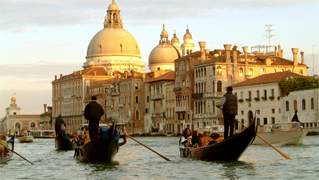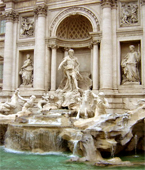|
|
|
Italian history, from Rome empire history the famous Italian renaissance history, the Italian republic history, medieval history, art passion, wars, peace as Rome history and all the Italian history tradition as teached in the Italian Schools |
|
|
|
ITALIAN HISTORY - ROMOLO E REMO |
ROME WAS FOUNDED 753 Y. B.C. |
|
|
ROME EMPIRE POLITICAL SYSTEM |
ROME EMPIRE ERA - THE SENATE |
ROME HISTORY - THE EMPIRE ERA |
ROME EMPIRE ORGANIZATION |
|
|
ITALIAN HISTORY - ROME EMPIRE |
ROME EMPIRE POLITICAL SYSTEM |
ITALIAN HISTORY - ROME EMPIRE |
ROME HISTORY - THE EMPIRE ERA |
|
ITALIAN HISTORY - REPUBLIC |
ITALIAN HISTORY - REPUBLIC |
ITALIAN HISTORY - REPUBLIC |
ITALIAN HISTORY - REPUBLIC |
|
ITALIAN HISTORY - REPUBLIC |
ITALIAN HISTORY - REPUBLIC |
ITALIAN HISTORY - REPUBLIC |
ITALIAN HISTORY - REPUBLIC |
|
Italian history, Rome empire history Italian renaissance history, Italian republic history, medieval history, Rome history and all the Italian history tradition as teached in the Italian Schools |
...ITALIAN REPUBLIC With Rome predominance in Central Italy consolidated, Rome prepared to extend it over the rest of Italy during a ten-year conflict with Taranto (282-272 BC), who was allied with the king of Epirus, Pyrrhus. While they enjoyed a modest victory at Ausculum (279BC), they were heavily defeated at Beneventum (275 BC). Rome thus achieved total supremacy of the Italian peninsula and set up a complicated system of alliances between the territory of Rome, towns and colonies enjoying full or partial Roman citizenship ('civitates sine suffragio') and the others who, while being independent, recognized Roman sovereignty in the context of a confederation extending over some 130,000 sq km and equipped with well over half a million soldiers Romans and allies. The economy of the whole Italic federation, whose territory now extended from Tuscany (through Piza-Pistoia-Fiesole-Rimini, but excluding the upper course of the Arno) to southern-most Calabria, was strengthened by the construction of the first important inland road, the VIA APPIA, from Rome to Capua and Benevento (312-268 BC), as well as the development of the fleet and marine transport. At the same time the monetary system was expanded with the minting of bronze (300 BC) and silver (269 BC) coins. |
|
ITALIAN MEDIEVAL HISTORY |
ITALIAN HISTORY - MEDIEVAL |
ITALIAN MEDIEVAL HISTORY |
ITALIAN HISTORY - MEDIEVAL |
|
Italian history, Rome empire history Italian renaissance history, Italian republic history, medieval history, Rome history and all the Italian history tradition as teached in the Italian Schools |
ITALIAN MEDIEVAL,... The last hundred years of the Western Roman Empire, 4th century AD, coincided with large migrations of Germanic peoples (Visigoths, Vandals, Burgundians, Huns, Heruli, Alemanni etc.). At the same time economic conditions also reflected the political instability of the imperial government, it deteriorated gradually and was accompanied by a chronic fall in population. The 5th century AD the Italian population had been reduced to some six million inhabitants. With the end of the Western Roman Empire the Italian territory remained basically united, first under Odoacer and Theodoric the Ostrogoth (493-526AD) under the latter, the country had periods of relative economic prosperity and peace. This was also due to the contribution of illustrious Romanists such as Boethius, Cassiodorus and Symmachus. It was in this period that the influence of the Christian church began more consistentlythis contrasted the focus of the Empire, whit it new capital Costantinople, founded by the emperor Constantine between 326-330AD |
|
ITALIAN MEDIEVAL HISTORY |
ITALIAN HISTORY - MEDIEVAL |
ITALIAN MEDIEVAL HISTORY |
ITALIAN HISTORY - MEDIEVAL |
|
Italian history, Rome empire history Italian renaissance history, Italian republic history, medieval history, Rome history and all the Italian history tradition as teached in the Italian Schools |
... The Christian church continues the authority and prestige of Rome, in particular the Popes as Leo I (440-461) and Gregory the Great (590-604). The church also assumes political and administrative functions whit repeated territorial acquisitions (St. Peter's patrimony). The 4th century AD began the western monachism, with St. Benedict of Nursia (480-543AD). The Benedictine monasteries and abbeys, became the early Middle Ages not only places of religion but centres for the preservation and spread of culture. They define the drainage and use the lands devastated and depopulated by recurrent war. The papacy, monasteries and other ecclesiastical institutions found themselves in possession of huge estates, often enlarged by further donations, that contributed to strengthen their political authority and power. The bad relations between Theodoric's successors and the Eastern Empire offered the emperor Justinian (527-565AD) the opportunity to re-unite the Empire. This starts a difficult conflict, the Graeco-Gothic War (535-553AD), which had grave consequences for the Italian territory as it was placed under the government of the Exarchate of Ravenna. |
|
ITALIAN HISTORY - RENAISSANCE |
ITALIAN HISTORY - RENAISSANCE |
ITALIAN HISTORY - RENAISSANCE |
ITALIAN HISTORY - RENAISSANCE |
|
Italian history, Rome empire history Italian renaissance history, Italian republic history, medieval history, Rome history and all the Italian history tradition as teached in the Italian Schools |
ITALIAN
RENAISSANCE, The scarse inclination
of the newly-formed urban middle-class for military activities let to a
search for the protection and support of their interests by the powerful
feudal families. In a short time, although in the name of the people, they
acquired the signoria or lordship of the old communes. |
|
ITALIAN HISTORY - RENAISSANCE |
ITALIAN HISTORY - RENAISSANCE |
ITALIAN HISTORY - RENAISSANCE |
ITALIAN HISTORY - RENAISSANCE |
|
Italian history, Rome empire history Italian renaissance history, Italian republic history, medieval history, Rome history and all the Italian history tradition as teached in the Italian Schools |
ITALIAN
RENAISSANCE, ... On
the death of their founder Gian Galeazzo in 1402, the ambitions of the
Duchy of Milan were reduced and Venice, having subdued the other Venetian
signorie, succeeded in advancing as far as the banks of the Adda. In the
meantime also the Florentine republic was drawing to an end. In 1382 the
last corporations represented in the city's government were removed and an
oligarchic regime installed that would later lead to the signoria of
Cosimo de' Medici (1434). While several years later the king of Sicily,
Alfonso d'Aragona, seized the throne of Naples (1442) and the Visconti of
Milan were replaced by the Sforza (1448), after the brief interlude of the
Repubblica Ambrosiana. |
|
DISCOVER THE ITALIAN REGIONS CITIES VACATIONS TRAVEL AND FUN IN ITALY PUGLIA TUSCANY LAZIO VENETO |
|
APULIA (PUGLIA) South east of Italy, green olive groves, yellow wheat, red tomatoes,
white limestone, and blue sea... South east of Italy beautiful place for
spring, summer and winter vacations, visit Lecce, Bari, Taranto,
Brindisi, Trani, Gargano Foggia, Barletta, Bitonto, Otranto, Santa Maria
di Leuca, Manfredonia, Andria, Gallipoli ... >>>See more about vacations
in Puglia |
| DISCOVER VENICE (VENEZIA) FOR VACATIONS TRAVEL AND FUN SEE THE FAMOUS GONDOLE |
 |
 |
|
Italian Business Guide your Gateway to Manufacturing suppliers and vendors DIRECT from Italy Jewelry producers, leather products suppliers, Italian Furniture manufacturing, Machinery suppliers, Power transmission suppliers, Equipments, Beauty care, Wine suppliers, Extra virgin Olive oil, Shoes, Furniture, Real estate food containers, Realtors, health care Mobile phones, home furnishing... |
||
|
Italian Business Guide is a list of certified B2B manufacturing, suppliers, vendors and professional companies from Italy convinced and ready to support DIRECTLY your Business at Manufacturing Pricing and customer service, Italian beauty care, chemical products, olive oil, clothing, apparel, machinery, industrial supplies, tiles, hotels, electronics, real estate.. |
|
|
|
FOR INFO CALL IN ITALY: +39.333.6371.644 (WhatsApp) IN THE USA +1(786)424-5106 |
|
|
|
The Italian Business Guide engineers work hard to support the Italian manufacturing and industrial suppliers in Italy and the USA and worldwide distribution companies creating a profitable relationship. Through the Italian apparel lingerie manufacturing, Italian electronics suppliers, Italian lingerie clothing suppliers, Italian fashion shirts manufacturing, industrial chemical suppliers from Italy, Italian real estate and vacations, Italian equipments suppliers web pages we reach this goal. Made in Italy, the italian apparel, electronics, lingerie, fashion, clothings manufacturing, vendors and suppliers listed in Italian Business Guide offered on our site are the best apparel, fashion, lingerie, industrial, electronics, vacations, leather furniture manufacturing products as Italy manufacturing tradition. Made in Italy to the USA, England, Ireland, Norway, Russia, Canada, Japan, Korea, Kuwait, China, Japan, Australia, Dubai, China, Germany, Saudi Arabia, Russia, Denmark, Norway, Bahrain, Canada, New Zeland, Italy, Austria, France, Holland, Spain, Scotland, Sweden,... and worldwide business to business wholesale distribution market |
|
|
|
About us Listing your Business in Italian Business Guide Terms and Conditions Privacy Policy |
|
|
|
ITALY USA BUSINESS GUIDE "YOUR GATEWAY TO THE AMERICAN AND ITALIAN B2B MANUFACTURING SUPPLIERS" |
|||
|
Offices in
Italy Europe |
Offices in Miami Florida U.S.A. |
Offices in
Beijing CHINA |
|
|
For info and customer services Email: info@ital-usa.com |
|||
|
2000 - 2024
Italy USA - United States of America
Business Guide, Inc. & Da-BI.N Group Inc. Network |